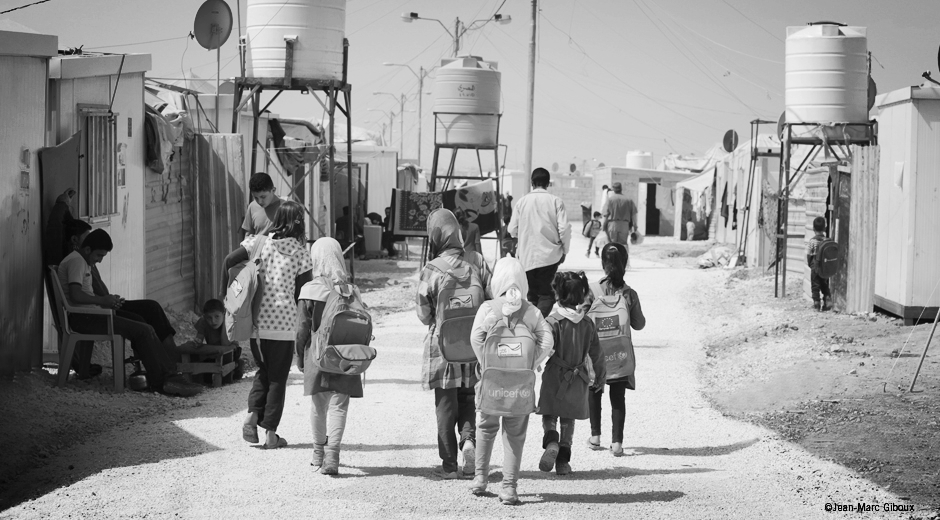Syria's Other War
Inside the sprawling Zaatari refugee camp in northwestern Jordan, near the Syrian border, a biting wind whips around homes cobbled together from tents, cinder blocks, and shipping containers. In this desert labyrinth, a gritty layer of sand covers everything. Syrian families began arriving here two years ago, fleeing war and persecution. Over two weeks, the United Nations set up a refugee camp. What started as a few tents has become a temporary home to nearly 100,000 people. The residents have made Zaatari an informal city, selling whatever they can – fruit, falafel, electronics, wedding gowns – along a makeshift shopping district nicknamed the Champs-Élysées.
Only a few miles away from Zaatari, the violence in Syria rages on. As the uprising-turned-civil-war enters its fourth year, three million Syrians have escaped to neighboring countries. More than half are children. The conflict in Syria has become one of the worst humanitarian crises of the 21st century.
In late 2013, 35 cases of polio were confirmed in the country, which had been polio-free for 14 years. Health authorities confirmed the virus was imported from Pakistan. In camps like Zaatari, where thousands of people live in congested conditions, stopping an outbreak of disease is critical, and the flare-up triggered an urgent response from aid groups. To immunize children as quickly as possible, Rotary and its partners in the Global Polio Eradication Initiative, along with local health authorities, conducted large-scale campaigns throughout 1,200 fixed sites, such as health clinics and schools. Three hundred mobile teams targeted hard-to-reach areas, which involved vaccinators entering Syria and the refugee camps just outside the country’s borders. In three days, 19,000 children received drops of polio vaccine.
Photographer Jean-Marc Giboux traveled to Jordan and made his way into the Zaatari camp, where he documented the immunization campaign. “There’s so much emotion within the walls of this camp. These people have been going through hell, and when something like polio reemerges, it’s a new wave of mayhem.”
Originally appeared in The Rotarian magazine on November 2014.
Photography by Jean-Marc Giboux.

A mobile vaccination team visits an isolated Bedouin camp in Jordan.

Most polio cases in Syria have occurred in children under two years old, who were born there after the war started and missed their regular vaccinations. Disruption of routine immunizations, damage to health infrastructure, and a displaced population have contributed to the return of polio.

While facing challenging conditions in the Zaatari camp, volunteers have immunized more than 14,000 children.

Despite the threat of rebel fighters, shelling, and airstrikes, aid groups have organized thousands of volunteers to administer vaccine. According to UNICEF, this effort is part of the biggest immunization campaign in Middle Eastern history — one that has reached 25 million children in seven countries in 37 rounds.

At the Zaatari camp, vaccinators visit every makeshift home in pairs. One volunteer handles the vaccinations, and the other serves as the recordkeeper.

Rotary provided a US$500,000 emergency response grant to support efforts to stop the polio outbreak in Syria - the first given to the World Health Organization in direct support of a Global Polio Eradication Initiative plan to conduct large-scale immunization campaigns in the Middle East.

Children walk through the Zaatari refugee camp, where polio vaccination teams go door to door as part of the mass immunization campaign taking place throughout Syria and its bordering countries — Lebanon, Iraq, Israel, Jordan, and Turkey.

